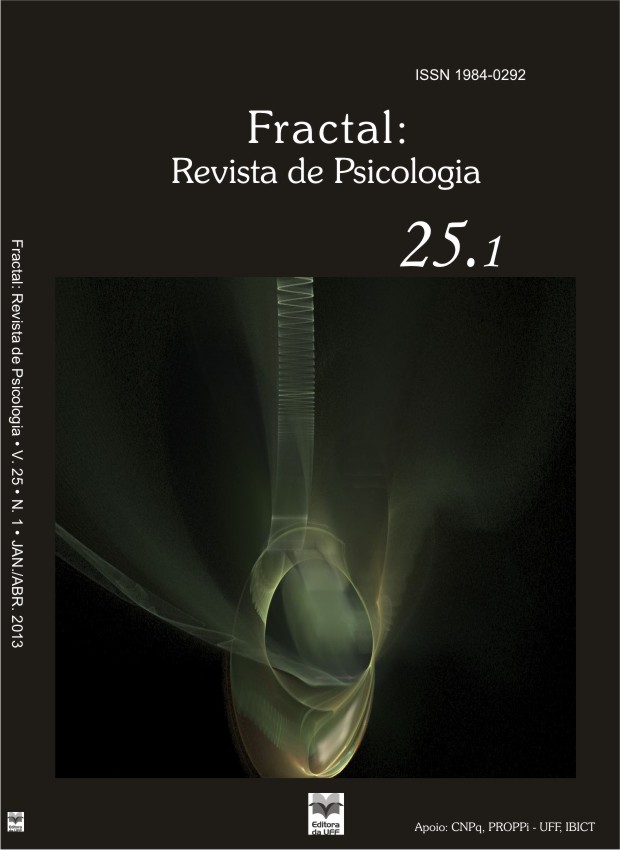Cinematographic analysis of the film “The Phantom of the Opera” according to jungian psychology
Keywords:
analytical psychology, archetype, anima and animus, father complexAbstract
This work aims to establish a dialogue between the movie “The Phantom of the Opera (2004)” by Joel Schumacher, with the application of Jungian concepts. We seek to understand the film following the interpretative model proposed by Franz, which is used in Fairy Tales. We applied Jungian categories to narrative film, with the main plot an example of the difficulty of the heroine of the film with the male, that is the consequence of aspects not included in its shadow, ie a feminine identification that place as a woman and not just as daughter, girl, puela. The non-integrated aspects relate to her female sexuality, her anima. The complex possess Christine, he favors what aspects of her femininity are not integrated into the ego.Downloads
References
CAVERNA. In: CHEVALIER, J.; GHEERBRANT, A. Dicionário de Símbolos. 20. ed. Rio de Janeiro: J. Olympio, 2006. p. 212-217.
DEMÉTER. In: BRANDÃO, J. S. Mitologia Grega. 18. ed. Petrópolis: Vozes, 2005. v. 1, p. 283-295.
ESTÉS, C. P. O Barba-Azul. In: ______. Mulheres que correm com os lobos. Rio de Janeiro: Rocco, 1994a. p. 57-63.
ESTÉS, C. P. A donzela sem mãos. In: ______. Mulheres que correm com os lobos. Rio de Janeiro: Rocco, 1994b. p. 478-486.
ESTÉS, C. P. A mulher-esqueleto: encarando a natureza de vida- morte- vida do amor. In: ______. Mulheres que correm com os lobos. Rio de Janeiro: Rocco, 1994c. p. 166-171.
O FANTASMA da Ópera. Direção: Joel Schumacher. Produção: Andrew Lloyd Webber. Warner Bros., 2004. 1 DVD (141 min).
A FLAUTA mágica. Direção: Ingmar Bergman. Versátil Home Vídeo, 1975. 1 DVD (135 min.).
FRANZ, M.-L. von. O processo de individuação. In: JUNG, C. G. et al. O homem e seus símbolos. 20. ed. Rio de Janeiro: Nova Fronteira, 1977. p. 158-229.
FRANZ, M.-L. von. Puer Aeternus: a luta do adulto contra o paraíso da infância. Rio de Janeiro: Paulus, 1992.
FRANZ, M.-L. von. A sombra e o mal nos contos de fada. Rio de Janeiro: Paulus, 2002.
FRANZ, M.-L. von. A interpretação dos contos de fada. Rio de Janeiro: Paulus, 2005.
HENDERSON, J. L. A Bela e a Fera. In: JUNG, C. G. et al. O homem e seus símbolos. 20. ed. Rio de Janeiro: Nova Fronteira, 1977. p. 137-140.
HILL, B. H. Reflections on “The Phantom of the Opera”. 2005. Disponível em: <http://www.cgjungpage.org/index.php?option=com_content&task=view&id=741&Itemid=40>. Acesso em: 20 abr. 2010.
JAFFÉ, A. O simbolismo nas artes plásticas. In: JUNG, C. G. et al. O homem e seus símbolos. 20. ed. Rio de Janeiro: Nova Fronteira, 1977. p. 230-271.
JUNG, C. G. Chegando ao inconsciente. In: JUNG, C. G. et al. O homem e seus símbolos. 20. ed. Rio de Janeiro: Nova Fronteira, 1977. p. 18-103.
JUNG, C. G. The Psychological Aspects of the Kore. In:______. Aspects of the Feminine. New York: Routledge, 2003. p. 163-188.
KAST, V. Introdução. In: ______. Pais e filhas, mães e filhos: caminhos para a auto-identificação a partir dos complexos materno e paterno. São Paulo: Loyola, 1997a. p. 9-11.
KAST, V. “Não tem sentido algum se esforçar”: complexos e a memória de episódios. In: ______. Pais e filhas, mães e filhos: caminhos para a auto-identificação a partir dos complexos materno e paterno. São Paulo: Loyola, 1997b. p. 31-40.
KAST, V. Filhas atenciosas: o complexo paterno originalmente positivo nas mulheres. In: ______. Pais e filhas, mães e filhos: caminhos para a auto-identificação a partir dos complexos materno e paterno. São Paulo: Loyola, 1997c. p.133-153.
KAST, V. “No fundo, não valho nada”: o complexo paterno originalmente negativo na mulher. In: ______. Pais e filhas, mães e filhos: caminhos para a auto-identificação a partir dos complexos materno e paterno. São Paulo: Loyola, 1997d. p. 195-200.
PELE de Asno. Direção: Jacques Demy. Dreamland (DVDS), 1970. 1 DVD (100 min).
ROSA. In: CHEVALIER, J.; GHEERBRANT, A. Dicionário de Símbolos. 20.ed. Rio de Janeiro: J. Olympio, 2006. p. 788-790.
SILVEIRA, N. Contos de fada. In: ______. Jung: vida e obra. 16. ed. Rio de Janeiro: Paz e Terra, 2001a. p. 105-111.
SILVEIRA, N. Estrutura da psique, inconsciente coletivo. In: ______. Jung: vida e obra. 16. ed. Rio de Janeiro: Paz e Terra, 2001b. p. 63-76.
SILVEIRA, N. Processo de individuação. In: ______. Jung: vida e obra. 16. ed. Rio de Janeiro: Paz e Terra, 2001c. p. 77-90.
Downloads
Published
How to Cite
Issue
Section
License
Authors publishing in this journal agree to the following terms:
- Authors retain copyright and grant the journal the right of first publication, with the work simultaneously licensed under the Creative Commons Attribution License allowing sharing of the work with acknowledgement of authorship of the work and initial publication in this journal.
- Authors are permitted to enter into additional contracts separately for non-exclusive distribution of the version of the work published in this journal (e.g., publishing in an institutional repository or as a book chapter), with acknowledgment of authorship and initial publication in this journal.

This work is licensed under a Creative Commons Attribution 4.0 International License.
To the extent possible under the law, Fractal: Journal of Psychology has waived all copyright and related rights to the Reference Lists in research articles. This work is published in: Brazil.
To the extent possible under law,Fractal: Journal of Psychology has waived all copyright and related or neighboring rights to Reference lists in research articles. This work is published from: Brazil.







